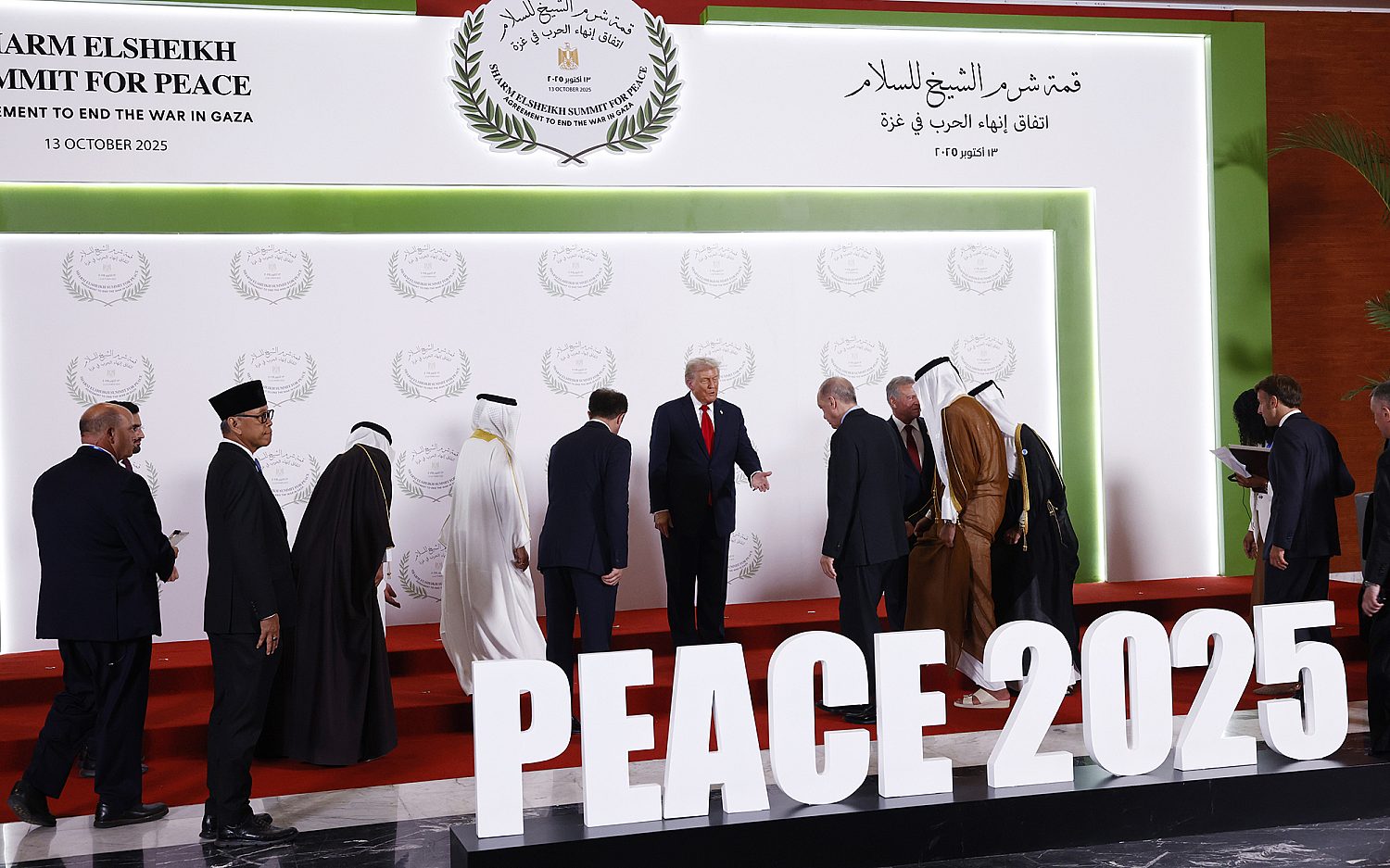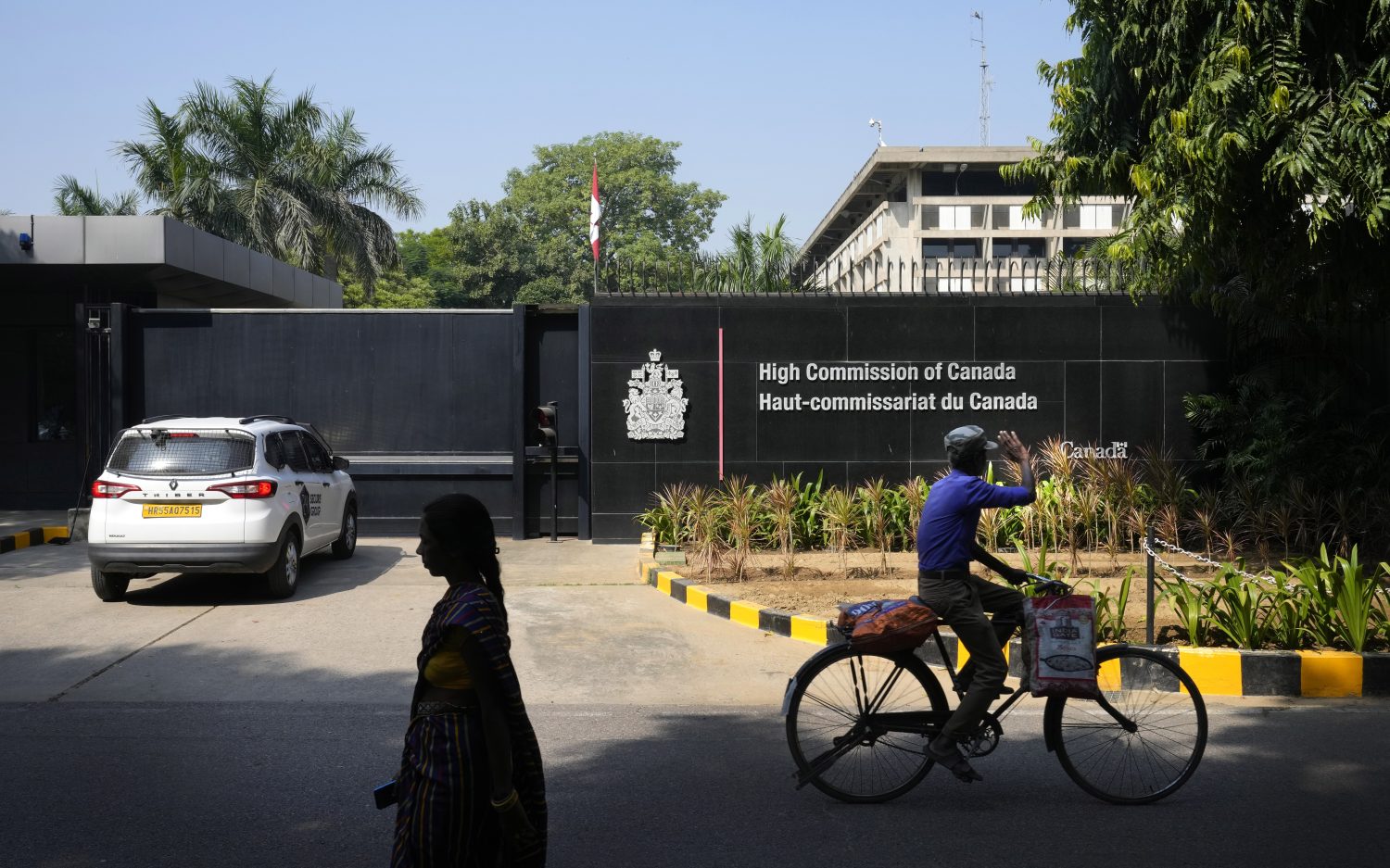Slaughtering conventional history's sacred cows
An excerpt from Rodney Stark’s <em>How the West Won: The Neglected Story of the Triumph of Modernity</em>
Historian Rodney Stark writes books that are models of popularly accessible scholarly writing. After reporting for the Oakland Tribune and The Denver Post, Stark gained a Ph.D. and taught at the University of Washington for 32 years before heading to Baylor University 10 years ago.
His The Triumph of Christianity: How the Jesus Movement Became the World’s Largest Religion (HarperOne) was WORLD’s Book of the Year for 2012. His new book, How the West Won: The Neglected Story of the Triumph of Modernity, slaughters more of conventional history’s sacred cows, including the belief beloved by classicists that the Greco-Roman world was wonderful and its demise a disaster. Here’s an excerpt reprinted with permission of ISI Books. —Marvin Olasky
Chapter 4: The Blessings of Disunity
In response to the long-prevailing absurdities about how the fall of Rome plunged Europe into the “Dark Ages,” some historians now propose that very little happened after the Western Empire collapsed—that the “world of Late Antiquity,” as Peter Brown has identified the era from 150 to 750, was one of slow transformation. Brown is, of course, correct that the history of these centuries can be told “without invoking an intervening catastrophe and without pausing, for a moment, to pay lip service to the widespread notion of decay.” But to deny decay does not require the denial of change.
The fall of Rome was, in fact, the most beneficial event in the rise of Western civilization, precisely because it unleashed so many substantial and progressive changes.
After Rome’s fall, Europe was blessed with lasting disunity; periodic efforts to reestablish empires failed. Disunity enabled extensive, small-scale social experimentation and unleashed creative competition among hundreds of independent political units, which, in turn, resulted in rapid and profound progress. Thus, just as the Greek “miracle” arose from disunity, so too “European civilization … owes its origins and raison d’être to political anarchy,” as Nobel Prize winner F.A. Hayek explained.
Not surprisingly, most of the early innovations and inventions came in agriculture. Soon most medieval Europeans ate better than had any common people in history, and consequently they grew larger and stronger than people elsewhere. They also harnessed water and wind power to a revolutionary extent. In addition, faced with constant warfare among themselves, medieval Europeans excelled at inventing and adopting new military technology and tactics, all of them consistent with the Western principles of warfare initiated by the ancient Greeks. In 732, when Muslim invaders drove into Gaul, they encountered an army of superbly armed and trained Franks and were destroyed. Subsequently, the Franks conquered most of Europe and installed a new emperor. Fortunately, the whole thing soon fell apart and Europe’s creative disunity was reestablished.
The Myth of the Dark Ages
Belief in the Dark Ages remains so persistent that it seems appropriate to begin by quickly revealing that this is a myth made up by eighteenth-century intellectuals determined to slander Christianity and to celebrate their own sagacity.
It has long been the “informed” opinion that after the fall of Rome came many centuries during which ascendant Christianity imposed an era of ignorance and superstition all across Europe. In her long-admired study of medieval philosophers, The Age of Belief (1954), Anne Fremantle wrote of “a dark, dismal patch, a sort of dull and dirty chunk of some ten centuries.” Fremantle’s assertion merely echoed the anti-Christian fulminations of various eighteenth-century dissenters. Voltaire described the era following Rome as one when “barbarism, superstition, [and] ignorance covered the face of the world.” According to Rousseau, “Europe had relapsed into the barbarism of the earliest ages. The people of this part of the world … lived some centuries ago in a condition worse than ignorance.” Edward Gibbon called the fall of Rome the “triumph of barbarism and religion.”
More recently, Bertrand Russell, writing in the illustrated edition of his famous college textbook (1959), declared: “As the central authority of Rome decayed, the lands of the Western Empire began to sink into an era of barbarism during which Europe suffered a general cultural decline. The Dark Ages, as they are called.” In 1991 Charles Van Doren earned praise for his book A History of Knowledge, in which he noted that the fall of Rome had “plunged Europe into a Dark Age that lasted for five hundred years.” It was an age of “rapine and death,” since “there was little law except that of force.” Worse yet, “life had become hard, with most people dependent on what they could scratch with their hands from the earth around their homes.” Van Doren blamed Christianity for prolonging this dismal era by disdaining consumption and the material world while celebrating poverty and urging contentment. In 1993 the highly respected historian William Manchester summed up his views of the period “AD 400 and AD 1000” in his book title: A World Lit Only by Fire. He dismissed those who no longer believed in the Dark Ages on grounds that “most of what is known about the period is unlovely. … The portrait that emerges is a mélange of incessant warfare, corruption, lawlessness, obsession with strange myths, and an almost impenetrable mindlessness.”
Nevertheless, serious historians have known for decades that these claims are a complete fraud. Even the respectable encyclopedias and dictionaries now define the Dark Ages as a myth. The Columbia Encyclopedia rejects the term, noting that “medieval civilization is no longer thought to have been so dim.” Britannica disdains the name Dark Ages as “pejorative.” And Wikipedia defines the Dark Ages as “a supposed period of intellectual darkness after the fall of Rome.” These views are easily verified.
There may have been some serious, but short-lived, dislocations associated with the collapse of Roman rule and the organization of new local political units. But the myth of the Dark Ages posits many centuries of ignorant misery based on four primary factors: (1) most cities were abandoned and fell into ruin; (2) trade collapsed, throwing local communities onto their own, very limited resources; (3) literacy all but disappeared; and (4) the standard of living of the average person fell to a bare subsistence level.
It is true that Roman cities and towns declined greatly in number and size after the fall of Rome. The population of the city of Rome dropped from about five hundred thousand in the year 400 to about fifty thousand in 600. Of 372 Roman cities in Italy listed by Pliny, a third disappeared soon after the fall. Many towns and cities in Gaul and Britain “became like ghost towns, with small populations,” according to Roger Osborne in Civilization. All told, most of the empire’s estimated 2,000 “cities” (mostly towns) suffered this fate.
But these changes did not mean that the West had slid into backwardness. The truth is that most Roman cities no longer served any purpose. They had been funded by the state and existed only for governing: for collecting taxes, administering local rule, and quartering troops. As Osborne noted, “they were centres of consumption, not production, and had no autonomous reason for existence.” In contrast, the towns that arose or survived in post-Roman Europe were centers of trade and manufacturing—as were the many towns in the “barbarian” North, which continued to flourish. The towns and cities of this new era tended not to be large, because there were no state subsidies to pay for daily distributions of free food and entertainment for idle masses. Those people “now were not fed at all unless they made shift to feed themselves,” as the historian A.R. Bridbury put it.
Surely this was a major change. Just as surely, it was not decay.
With the demise of the fabulously rich Roman elite, the luxury trade bringing exotic food, jewels, and cloth from distant sources may have declined. But proponents of the Dark Ages myth propose that all forms of trade soon disappeared: in Van Doren’s words, “the roads were empty of travelers and freight.” But it wasn’t so—there was far more European trade after the fall. For one thing, although the Romans transported a lot of goods, it wasn’t really trade but merely “a traffic in rent and tribute,” in Robin Williams-McClanahan’s apt phrase. Coins and precious metals, food, slaves, and luxury goods flowed to Rome; little came back except tax collectors and soldiers. As Bridbury explained, Roman trade “did not generate income, it simply impoverished those from whom it was extorted.” Second, long before the fall of Rome the “barbarian” areas had established very active, dense, long-distance trade networks, and these not only survived but soon were extended south and westward. Post-Roman Europe sustained busy trade networks dealing in practical things such as iron tools and weapons, pottery, glassware, and woolens. Most of these items were well within the means of ordinary people, and some of the goods traveled several thousand miles.
“Everyone” knows that the fall of Rome soon resulted in an age of illiteracy. No doubt most people in the post-Roman world were unable to read or write. But this was nothing new: literacy was probably below 5 percent during the days of the empire as well. It also is true that after the fall, fewer people wrote in Latin or Greek—since they did not speak them either. Meanwhile, many of the “barbarian” tongues already were, or soon became, written languages. For example, written Gothic dates from the fourth century and Old English from about the fifth.
As for the average person’s standard of living, it is true that the state no longer subsidized food or made daily free distributions of bread, olive oil, and wine. But studies based on isotopic analysis of skeletons have found that people in the so-called Dark Ages ate very well, getting lots of meat, and as a result they grew larger than people had during the days of the empire.
Finally, the Germanic North had already been “Romanized,” even though it lay outside the empire. The historian Alfons Dopsch demonstrated that by the end of the first century the Germanic societies “had acquired most of the attributes of a fully articulated economic civilisation, including the use of coinage and the dependence on trade.” Moreover, when the Goths and Franks and other Germanic peoples took up residence in the empire, or later in what had been parts of the empire, they quickly assimilated. Thus it is that nowhere in modern Europe does anyone speak Frankish or Gothic. Instead, millions speak French, Spanish, and Italian—the Romance languages, which are, of course, merely “low” forms of Latin. This shift occurred very early.
What did decline during the so-called Dark Ages were literary pursuits. Manchester expressed the common theme: “Intellectual life had vanished from Europe.” In fact, little writing on any subject survives. As a result, echoing generations of scholars, the famous nineteenth-century artist Howard Pyle could complain, “Few records remain to us of that dreadful period in our world’s history, and we only know of it through broken and disjointed fragments.” Although some writing from that era may have been lost, it appears that far less was written for several centuries after the fall of Rome than before or since.
Why? In large part because the wealthy leisure class inherent in the parasitical nature of the imperial system had fallen away. Under the empire, the immense wealth drained from the provinces had sustained the idle rich in Rome. When this flow of tribute disappeared, so did the leisure class. There ended up being far fewer persons who did not need to work for their livings and who had the leisure to devote themselves to writing and other “nonproductive” enterprises. It was a few centuries before the reappearance of persons free to produce artistic and literary works.
For generations of scholars, that alone was sufficient to call an era “dark,” even if it was abundant in new technology—which these scholars probably would not have noticed in any event.
The Geography of Disunity
The map of medieval Europe’s independent political units looks remarkably like a map of primitive cultures occupying this same area in 3000 BC. That is because the geography proved inimical to unification. Europe was, in E.L. Jones’s words, “a scatter of regions of high arable potential set in a continent of wastes and forests.” Unlike China or India, it was not one large plain but a multitude of fertile valleys surrounded by mountains and dense forests, each often serving as the core area of an independent state. Only a few sizable plains, such as those surrounding Paris and London, could easily sustain larger political units; the rest of the political units that developed were tiny—statelets is the appropriate term. We lack sufficient information to count the states and statelets of the early post-Roman period, but as late as the fourteenth century there were more than a thousand independent units spread across Europe. Even today there are more than thirty.
Europe’s geographic barriers created not only many political units but cultural and linguistic diversity too, which also impeded efforts at unification. It should be remembered that Rome was able to impose its rule on far less than half of Europe—only the area southwest of the Rhine and the Danube Rivers. Even in Britain, Hadrian’s Wall separated the Roman area from that of the northern tribes. Within the empire, the Mediterranean substituted for a great plain facilitating central control from Rome. That is, Rome was essentially a waterfront empire encircling the great inland sea, and most Roman travel and trade was by boat. It is doubtful that the Romans could have controlled either Spain or the Levant had the legions been required to invade and supply themselves entirely by land. And once Rome fell, both areas splintered back into many small units.
Unlike Rome, however, most of Europe did not depend on the Mediterranean for waterborne tradeways. It had an immense advantage over Asia and Africa because of what Jones called “an abnormally high ratio of navigable routeways to surface area, which was a function of a long indented coastline and many navigable rivers.”
Migrations and Disunity
Our knowledge of the migrations of various groups into and across Europe is a confused mess. Most of the groups left no written accounts of their movements; the Roman reports are often wrong and almost always biased; modern archaeology has challenged a lot of what we thought we knew.
For example, every British schoolchild knows about the invasion of the Angles and Saxons, two related Germanic peoples who arrived in England during the fifth century and took over, as demonstrated by the fact that their language (Old English) soon dominated. In fact, the word England means “land of the Angles.” The Anglo-Saxons’ arrival in England and their rise to power is carefully attested by the Venerable Bede (672–735) in his esteemed Ecclesiastical History of the English People.
But archaeologists now challenge the claim that a substantial Anglo-Saxon migration took place. As archaeology professor Peter S. Wells has documented, isotope studies of skeletons in what everyone has regarded as Anglo-Saxon cemeteries show “consistently that the individuals, whom earlier investigators would have interpreted as immigrants from the continent, were in fact local people.” Anthropologists now believe that the famous migrations “rarely, if ever, involved the large numbers that many accounts indicate, especially in western and northern Europe.” Instead, it now is believed that “small groups of elites, often with bands of their loyal warriors, sometimes moved from one region to another and quickly asserted their power over the peoples into whose land they moved.” That is, after the arrival of elite groups of Angles and Saxons, most people in England became Anglo-Saxons—or at least their descendants soon did.
Obviously there were various “barbarian” groups on the borders of the Roman Empire. Obviously, too, many of these groups were large enough to pose a serious threat to Roman areas. And clearly some of them did enter the empire in large numbers as Roman rule faltered—the Ostrogoths and Visigoths, for example. But in the post-Roman period, it is difficult to know whether large groups, or only elites, were involved in migrations. During the fifth century, did great Frankish migrations occur into northern Gaul, or did Frankish warrior elites simply carve out many small kingdoms populated by locals? Whatever the case, cultural diversity increased dramatically, which increased disunity.
The proliferation of European political units had several important consequences. First, it tended to make for weak rulers. Second, it offered people some opportunity to depart for a setting more desirable in terms of liberty or opportunity. Finally, it provided for creative competition.
Excerpted from Rodney Stark’s new book, How the West Won: The Neglected Story of the Triumph of Modernity. Reprinted with permission of ISI Books.
An actual newsletter worth subscribing to instead of just a collection of links. —Adam
Sign up to receive The Sift email newsletter each weekday morning for the latest headlines from WORLD’s breaking news team.




Please wait while we load the latest comments...
Comments
Please register, subscribe, or log in to comment on this article.